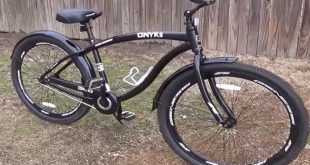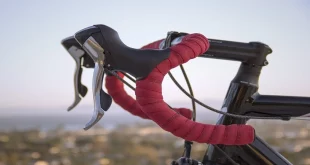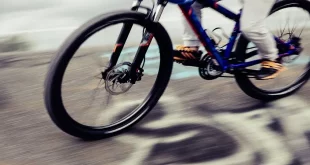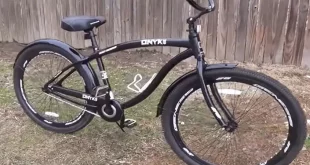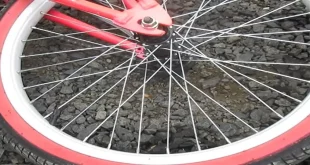Yes, it is possible to pedal a downhill bike uphill by using your own physical power. However, it can be quite challenging due to the heavy weight and specialized design of downhill bikes, which prioritize downhill speed and stability over uphill efficiency.
Understanding The Mechanics Of A Downhill Bike
As thrill-seeking mountain bikers, one enticing challenge we may encounter is the prospect of pedaling a downhill bike uphill. While it may seem counterintuitive – given the purpose and design of a downhill bike – understanding its mechanics can shed light on whether this is a feasible endeavor.
So, let’s dive into the components of a downhill bike and unravel the purpose behind its specialized construction.
Components Of A Downhill Bike:
- Frame: The frame of a downhill bike is built with durability and stability in mind. Its robust construction ensures that it can withstand the intense forces encountered during downhill descents.
- Suspension: Downhill bikes feature a dual suspension system, comprising both front forks and rear shock absorbers. These components play a vital role in smoothing out rough terrain and absorbing impacts, offering enhanced control and comfort during descents.
- Wheels and tires: Designed to tackle challenging terrain, downhill bikes are equipped with sturdy, wide wheels and high-traction tires. These components provide stability, grip, and the ability to roll smoothly over rocks, roots, and other obstacles.
- Brakes: Downhill biking demands exceptional braking power. Therefore, downhill bikes are equipped with powerful hydraulic disc brakes, allowing riders to control their speed with confidence, even on steep descents.
- Gearing: While the focus of a downhill bike is primarily on descending, it is still equipped with gears to aid in pedaling when necessary. However, the gear ratios are designed to favor descending, making uphill pedaling more challenging.
- Weight: Due to their robust construction, downhill bikes tend to be heavier than other types of mountain bikes. The additional weight provides stability and control during high-speed descents but can make uphill pedaling more strenuous.
The purpose of a downhill bike:
The purpose of a downhill bike becomes evident when we consider the adrenaline-pumping descents it is designed for. The key goals of a downhill bike include:
- Speed: Downhill bikes are optimized for achieving maximum speed while maintaining control and stability on steep downhill gradients.
- Strength: The construction of a downhill bike prioritizes strength and durability to withstand the harsh impacts and forces encountered during downhill trails.
- Control: The dual suspension system and enhanced braking capabilities enable riders to maintain control and navigate technical terrain at high speeds.
- Safety: With their specialized components, downhill bikes are built to offer riders a higher level of safety when tackling challenging downhill trails.
While it is possible to pedal a downhill bike uphill, its design and components may make it less efficient and more physically demanding compared to other types of bikes. The unique construction and purpose of a downhill bike make it better suited for the exhilarating descents that thrill-seeking mountain bikers crave.
The Challenges Of Uphill Pedaling On A Downhill Bike
Pedaling a downhill bike uphill can be a challenging endeavor. While downhill bikes are designed to handle the downhill terrain with ease, their capabilities are put to the test when it comes to uphill pedaling. In this section, we will explore the main challenges that arise when attempting to pedal a downhill bike uphill.
Weight And Frame Design Limitations
- Downhill bikes are significantly heavier than their cross-country counterparts. This extra weight makes uphill pedaling more strenuous and demanding on the rider’s energy levels.
- The frame design of downhill bikes prioritizes stability and maneuverability, sacrificing efficiency when it comes to uphill climbs. The long wheelbase and slack geometry can make it harder to maintain traction and control on steep inclines.
Gear Ratios And Their Impact On Uphill Pedaling
- Downhill bikes typically have a limited range of gears, optimized for high-speed descents rather than uphill climbs. The gear ratios may not be suitable for generating enough power and torque to conquer steep inclines efficiently.
- Riders may find themselves running out of options when it comes to finding the appropriate gear for the level of resistance encountered during uphill pedaling. This can lead to fatigue and make it challenging to maintain momentum.
Traction Issues On Steep Inclines
- The aggressive tread patterns and wide tires often found on downhill bikes are optimized for grip and stability on downhill terrain. However, these features can work against the rider when it comes to uphill pedaling.
- Traction issues can arise when the rear wheel loses grip, especially on loose or slippery surfaces. This can result in wheel spin, making it difficult to maintain forward motion and potentially causing the rider to lose control.
Uphill pedaling on a downhill bike presents several challenges that riders must overcome. The weight and frame design limitations, gear ratios, and traction issues all play a role in making uphill ascents more demanding. It’s essential for riders to be aware of these challenges and adapt their techniques and strategies accordingly to make the most of their downhill bikes in uphill situations.
Techniques And Strategies For Uphill Pedaling On A Downhill Bike
So, you’re wondering if it’s possible to pedal a downhill bike uphill? Well, the short answer is yes, it is possible! While downhill bikes are built for speed and descending rough terrain, with their long-travel suspension and slack geometry, you can definitely still pedal them uphill with the right techniques and strategies.
In this section, we’ll explore some tips to help you conquer those uphill climbs on your downhill bike.
Body Positioning For Effective Pedaling
Maintaining the proper body positioning is crucial when pedaling a downhill bike uphill. Here are some key points to keep in mind:
- Shift your weight forward: Lean your upper body slightly forward to keep your weight centered over the bike’s front end. This will help with traction and prevent the front wheel from lifting off the ground.
- Engage your core: Activate your core muscles to provide stability and support. This will help you maintain balance and control while pedaling uphill.
- Keep your elbows bent: Bent elbows act as shock absorbers, allowing you to better absorb bumps and impacts on the trail. This will help you maintain control and reduce fatigue.
- Stand up and lean forward: When tackling steeper uphill sections, stand up on your pedals and lean forward slightly. This will allow you to transfer more power to the pedals and maintain better traction.
Pacing And Cadence Control
Controlling your pacing and cadence is essential for efficient uphill pedaling on a downhill bike. Consider the following:
- Find a sustainable rhythm: Identify a comfortable cadence that allows you to maintain a steady pace without exhausting yourself too quickly. Experiment with different gear combinations to find the optimal balance.
- Shift gears proactively: Anticipate the changes in terrain and shift gears accordingly. Shift to a lower gear before reaching a steeper section to make it easier to pedal uphill.
- Use a consistent pedal stroke: Focus on using a smooth and consistent pedal stroke, applying pressure evenly throughout each revolution. Avoid stomping on the pedals or mashing the gears, as this can lead to loss of traction and wasted energy.
Utilizing Gear Shifting Effectively
Effective gear shifting can make a world of difference when climbing uphill on a downhill bike. Consider the following strategies:
- Know your gears: Familiarize yourself with the gear ratios available on your bike and understand how they affect your pedaling effort. This knowledge will help you choose the appropriate gear for each section of the climb.
- Anticipate gear changes: As mentioned earlier, shift gears before you reach a steep section or when you feel the need for more or less resistance. This proactive approach will help you maintain momentum and avoid sudden power losses.
- Learn to feather the brakes: On particularly steep uphill sections, you may need to lightly apply the brakes to prevent your rear wheel from spinning out. Mastering the art of feathering the brakes can help maintain control and prevent wheel slippage.
Remember, pedaling a downhill bike uphill requires practice, patience, and the right mindset. Don’t be discouraged if it feels challenging at first. With time and experience, you’ll become more confident and efficient in conquering those uphill climbs. So gear up, adjust your body position, control your cadence, and pedal your way up those slopes like a pro.
Overcoming Uphill Challenges With Training And Skills
Pedaling a downhill bike uphill may seem like an impossible task, considering its weight and design. However, with the right training and honing of skills, you can conquer those uphill challenges. By focusing on building lower body strength and endurance, improving bike handling skills, and working on balance and stability, you can make uphill rides on a downhill bike more manageable.
Let’s dive into each of these areas to understand how they contribute to overcoming the uphill challenges.
Building Lower Body Strength And Endurance
- Engaging in strength training exercises such as squats, lunges, and deadlifts helps in building leg muscles and increasing overall strength.
- Incorporating cardiovascular exercises like cycling, running, or stair climbing helps improve endurance and stamina.
- Cross-training activities like hiking, swimming, or yoga can provide overall fitness and flexibility, enhancing your uphill performance on a downhill bike.
Improving Bike Handling Skills
- Practicing proper body positioning, weight distribution, and balance techniques helps maintain control and stability while ascending on a downhill bike.
- Mastering the art of shifting gears and using the right technique for each slope can make uphill climbs more efficient and less demanding.
- Learning to maintain a steady cadence and finding the right balance between exertion and conservation of energy is essential for success on uphill terrains.
Working On Balance And Stability
- Participating in balance and stability exercises, such as single-leg stands or balancing on an unstable surface, can greatly improve your control over the bike.
- Practicing low-speed maneuvers, such as tight turns and figure-eights, helps enhance your balance and stability while maneuvering uphill.
- Strengthening your core muscles through exercises like planks or yoga can contribute to overall stability and control while tackling uphill challenges.
By focusing on these training and skill development aspects, you can gradually overcome the uphill challenges faced while pedaling a downhill bike uphill. Remember to start slowly, gradually increase your training intensity, and practice regularly to improve your overall performance.
With dedication and persistence, you’ll be conquering those uphill slopes with ease in no time.
Tips For Choosing The Right Downhill Bike For Uphill Riding
If you’re a mountain biker seeking a new challenge, you might find yourself wondering if you can pedal a downhill bike uphill. While it might seem counterintuitive, it is indeed possible with the right bike and technique. In this section, we’ll explore the factors to consider when selecting a bike for uphill riding, the features to look for in an uphill-friendly downhill bike, and some popular models worth considering.
Factors To Consider When Selecting A Bike:
- Frame weight: Opt for a lightweight downhill bike that allows for easier uphill pedaling. A lighter frame will make it less exhausting to tackle those steep climbs.
- Gear ratios: Look for a bike with a wide range of gears, particularly a lower granny gear. This will provide the necessary low-end torque for uphill pedaling without putting excessive strain on your legs.
- Suspension: Consider bikes with adjustable suspension settings. This allows you to lock out or stiffen the suspension for more efficient uphill pedaling and better power transfer.
- Geometry: Choose a downhill bike with a slightly steeper head tube angle and a shorter wheelbase. These features contribute to better climbing capabilities and improved maneuverability on uphill terrains.
- Tires: Opt for tires with a tread pattern that strikes a balance between grip and low rolling resistance. Look for narrower and less aggressive tires that offer better efficiency on uphill sections.
Features To Look For In An Uphill-Friendly Downhill Bike:
- Frame material: carbon fiber or lightweight aluminum frames are ideal for reducing overall bike weight and improving uphill performance.
- Drivetrain: bikes with a 1x drivetrain, featuring a single chainring at the front, offer simplicity and weight savings, making them well-suited for uphill riding.
- Brakes: consider bikes with powerful hydraulic disc brakes for efficient stopping power, especially when descending after uphill climbs.
- Dropper seatpost: a dropper seatpost allows for quick and seamless height adjustments on the go, ensuring optimal pedaling position on both ascents and descents.
- Handlebars: choose wider handlebars for improved stability and control while climbing, enabling you to maintain a comfortable and powerful riding position.
Recommendations And Popular Models:
- Specialized enduro: known for its versatility, the specialized enduro is a popular choice among enthusiasts who enjoy climbing as much as descending. Its lightweight construction, adjustable suspension, and excellent overall performance make it suitable for uphill riding.
- Santa cruz nomad: the santa cruz nomad is a downhill bike that excels in uphill pedaling due to its advanced suspension platform and well-thought-out geometry. It strikes a balance between downhill shredding and efficient climbing.
- Yeti sb165: the yeti sb165 is a top-of-the-line downhill bike that doesn’t compromise on uphill performance. Its efficient pedaling platform, lightweight frame, and exceptional handling make it a favorite among riders tackling challenging uphill trails.
When selecting a downhill bike for uphill riding, remember to consider the crucial factors we discussed, prioritize features designed for uphill pedaling, and explore reputable models like those mentioned above. By finding the right bike that suits your riding style and capabilities, you can tackle those uphill challenges with confidence and bring a new level of excitement to your mountain biking adventures.
Realistic Expectations For Uphill Pedaling On A Downhill Bike
If you’re an avid downhill mountain biker who has ever found yourself facing an uphill challenge, you may have wondered if it’s even possible to pedal a downhill bike uphill. Well, the short answer is yes, it is possible. However, it’s important to set realistic expectations and understand the limitations and compromises that come with uphill pedaling on a downhill bike.
Understanding The Limitations And Compromises
When it comes to pedaling a downhill bike uphill, it’s crucial to keep in mind a few key limitations and compromises:
- Weight: Downhill bikes are built to withstand the demands of high-speed descents, which means they tend to be heavy. This added weight can make climbing uphill more challenging and require more effort from the rider.
- Gearing: Downhill bikes typically have a more limited range of gears compared to traditional mountain bikes. This can make it harder to find the optimal gear ratio for climbing steep slopes.
- Suspension: Downhill bikes are equipped with long-travel suspension that is designed to soak up impacts on rough and rocky terrain. While this suspension is great for downhill riding, it can lead to a loss of pedaling efficiency when climbing uphill.
Setting Achievable Goals For Uphill Riding
Although pedaling a downhill bike uphill may not be as efficient as using a dedicated climbing bike, there are still achievable goals you can set to make the most out of your uphill riding experience:
- Build your fitness: Uphill pedaling on a downhill bike can be a great way to build your strength and endurance. By setting goals to gradually increase your climbing abilities, you can improve your overall fitness and enjoy a more rewarding uphill riding experience.
- Choose suitable trails: Look for trails that offer a mix of downhill and uphill sections, allowing you to make the most of both aspects of the ride. This way, you can enjoy the thrill of downhill descents while still challenging yourself with uphill climbs.
- Be prepared for technical climbs: Uphill pedaling on a downhill bike may require you to navigate technical terrain, such as roots, rocks, and switchbacks. Take the time to practice your skills on these challenging climbs to improve your ability to conquer them.
Balancing Uphill Challenges With Downhill Performance
While it’s important to appreciate the uphill challenges that come with riding a downhill bike, it’s equally important to remember the downhill performance that makes these bikes so appealing. Finding a balance between uphill challenges and downhill fun is key.
Here are some tips to maintain that balance:
- Adjust your suspension: Fine-tuning your suspension settings can help optimize your bike’s performance for both uphill and downhill riding. Consider adjusting the compression and rebound damping to find a setting that balances pedaling efficiency with downhill control.
- Focus on technique: Uphill riding on a downhill bike requires a different set of skills compared to downhill riding. Concentrate on maintaining a smooth pedal stroke, shifting your weight properly, and using efficient climbing techniques to make the most out of each ascent.
- Enjoy the downhill rewards: Remember that the true joy of riding a downhill bike lies in the thrilling descents. Embrace the challenge of uphill pedaling, but always keep in mind that the real payoff comes when you let gravity do its thing on the downhills.
So, if you find yourself faced with an uphill climb on your downhill bike, don’t be deterred. With realistic expectations, achievable goals, and a balanced approach, you can conquer those uphill challenges while still enjoying the exhilarating downhill performance that makes downhill biking so exciting.
Safety Considerations For Uphill Pedaling On A Downhill Bike
When it comes to pedaling a downhill bike uphill, there are several safety considerations to keep in mind. While it may seem like a daunting task, with the right approach and precautions, you can conquer those uphill slopes on your downhill bike without compromising your safety.
Here are some key points to consider:
Assessing The Risks And Potential Hazards
- Before attempting to pedal uphill on a downhill bike, assess the risks and potential hazards in your surroundings.
- Evaluate the steepness of the terrain and whether it is suitable for uphill pedaling on a downhill bike.
- Take into account the condition of the trail, such as loose gravel, rocks, or uneven surfaces, which may pose challenges during uphill pedaling.
- Be aware of any obstacles, such as tree roots or fallen branches, that could impede your progress or cause accidents.
- Consider the weather conditions, as wet or slippery surfaces can make it more difficult to pedal uphill on a downhill bike.
Protective Gear For Uphill Riding
- Wear appropriate protective gear, including a well-fitted helmet, knee pads, elbow pads, and gloves, to minimize the risk of injuries in case of falls or accidents.
- Utilize a full-face helmet designed specifically for downhill biking to provide additional protection for your head and face.
- Consider wearing padded shorts or body armor to protect your hips, thighs, and torso against impact during uphill pedaling.
- Opt for sturdy, closed-toe shoes or specific downhill biking shoes that provide a good grip on the pedals and offer ankle support.
Maintaining The Bike For Optimal Performance
- Regularly check your downhill bike before attempting to pedal uphill to ensure it is in optimal condition.
- Inspect the brakes to ensure they are responsive and capable of providing adequate stopping power during uphill climbs.
- Ensure that the drivetrain, including the chain, derailleur, and gears, is properly lubricated to ensure smooth shifting and efficient pedaling.
- Check the tire pressure and tread to ensure they are suitable for uphill pedaling, as overinflated or worn-out tires can affect traction and control.
- Keep the suspension system properly adjusted for the specific demands of uphill pedaling, as it can significantly impact comfort and handling.
Remember, safety should always be your top priority when pedaling a downhill bike uphill. By assessing the risks, wearing the right protective gear, and maintaining your bike for optimal performance, you can enjoy the exhilaration and challenge of uphill climbs while keeping yourself safe.
Frequently Asked Questions For Can You Pedal A Downhill Bike Uphill?
Can You Pedal A Downhill Bike Uphill?
Yes, you can pedal a downhill bike uphill, although it might not be as efficient as a regular mountain bike due to its heavier frame and longer suspension. However, with enough strength and determination, it’s definitely possible to conquer the uphill climb with a downhill bike.
How Difficult Is It To Pedal A Downhill Bike Uphill?
Pedaling a downhill bike uphill can be challenging due to its heavier weight, longer suspension travel, and geometry designed for downhill riding. It requires more effort and strength compared to a regular mountain bike. However, with practice and proper technique, it can be done successfully.
Do Downhill Bikes Have Gears For Uphill Climbing?
Most downhill bikes have fewer gears, typically ranging from 7 to 10, compared to a typical mountain bike. This is because the primary focus of downhill bikes is descending rather than climbing. However, the gears on a downhill bike are designed to provide enough range to tackle moderate uphill sections, helping you in your uphill climbs.
Conclusion
Pedaling a downhill bike uphill is no easy feat. While it is technically possible to pedal a downhill bike uphill, it is not the most efficient or comfortable way to navigate steep inclines. Downhill bikes are designed for speed and stability on downhill terrains, with features that prioritize descending rather than climbing.
The heavy frame, long suspension travel, and slack geometry make pedaling uphill a challenge. However, with enough determination and skill, it is possible to conquer uphill climbs on a downhill bike. Riders must utilize their strength, timing, and technique to effectively pedal uphill.
Take advantage of momentum, choose the right gear, and maintain a steady cadence to achieve success. It may require extra effort and adjustment, but the feeling of accomplishment when conquering a challenging uphill on a downhill bike is unparalleled. Remember, practice and experience play a crucial role in mastering uphill pedaling on a downhill bike.
 CommutingLife Explore The World On Two Wheels
CommutingLife Explore The World On Two Wheels

